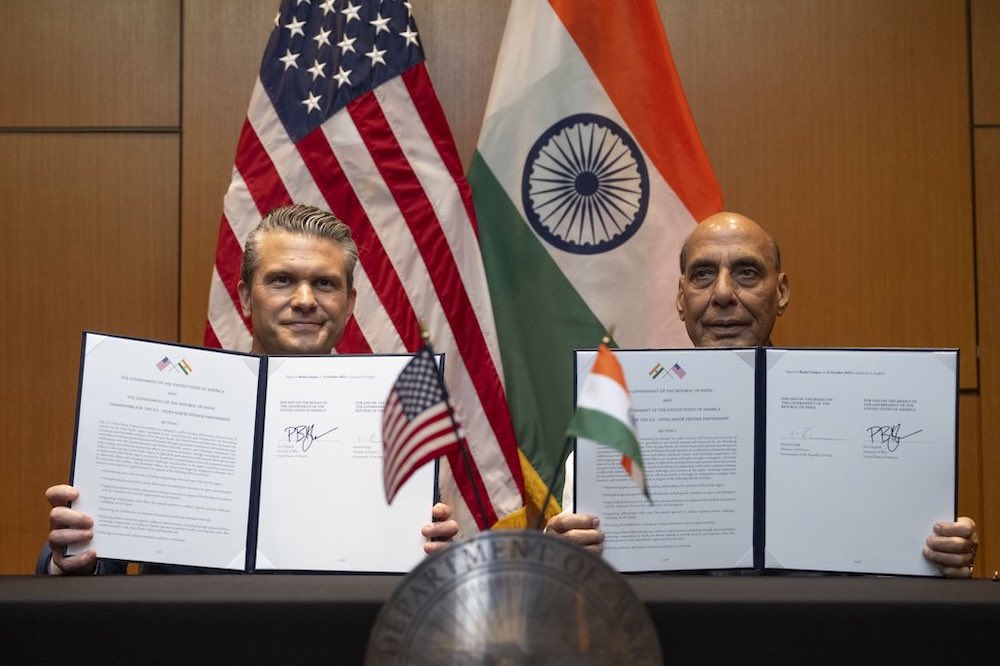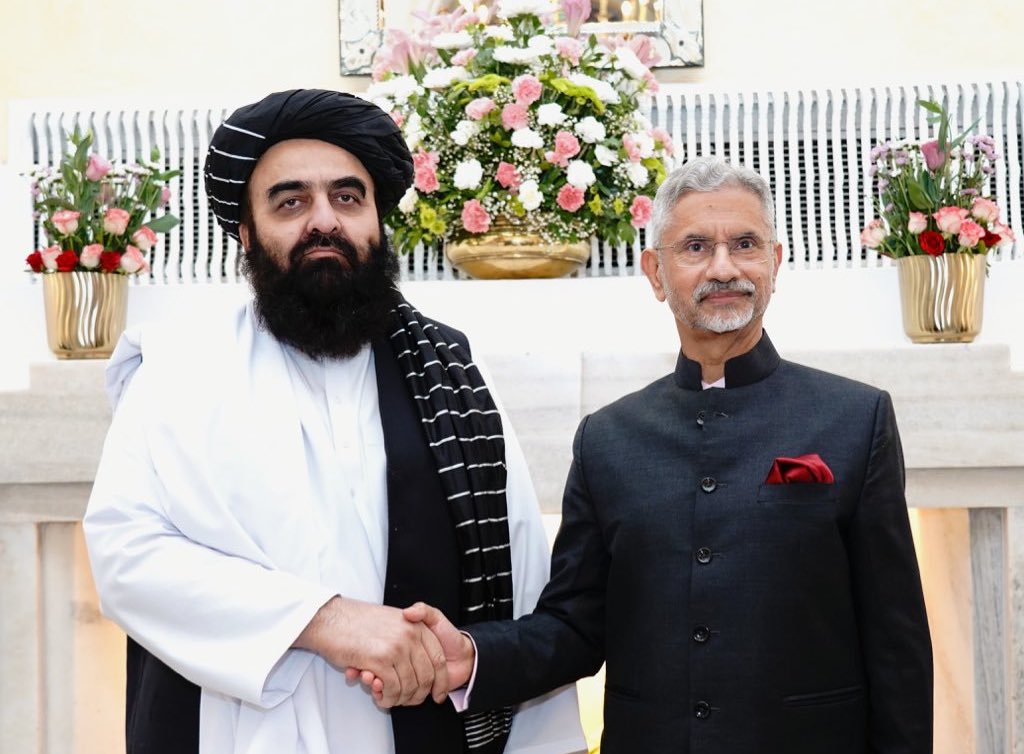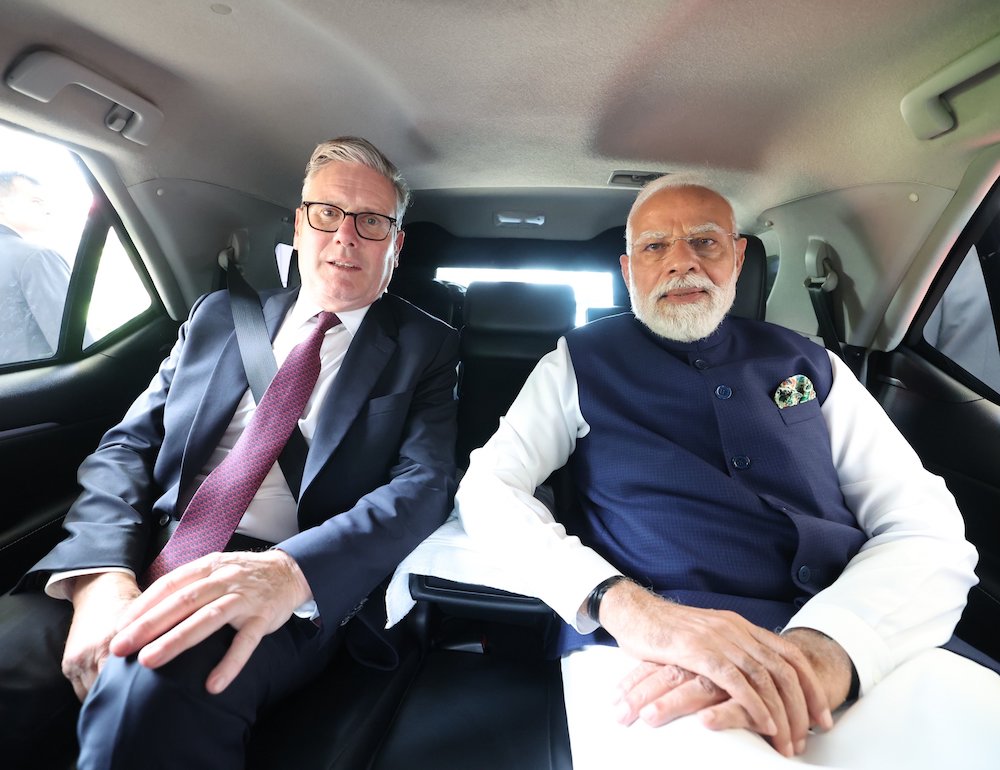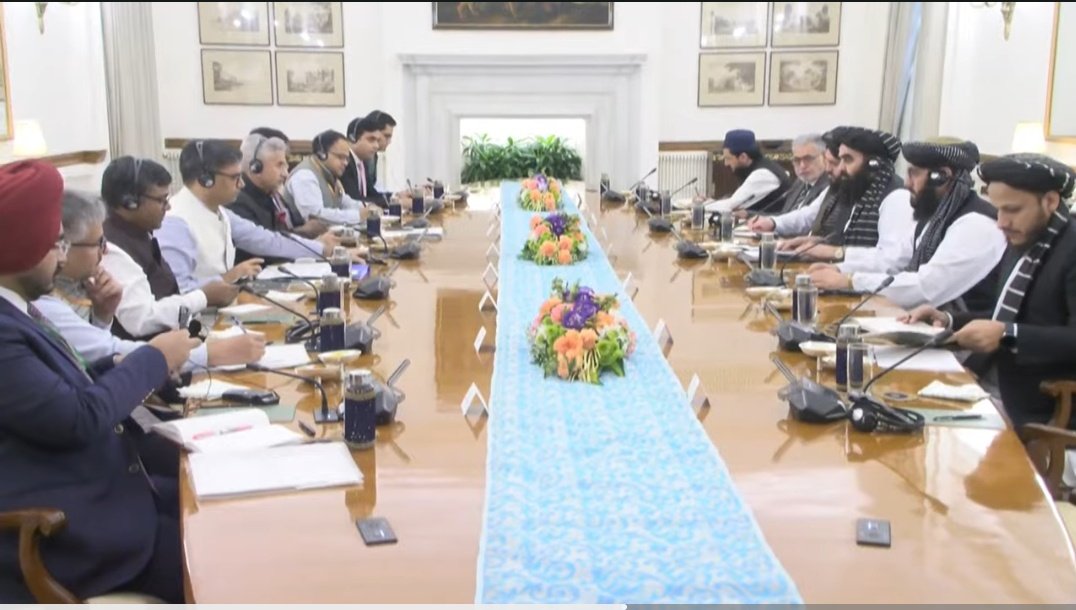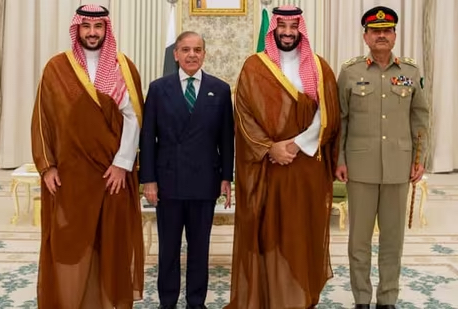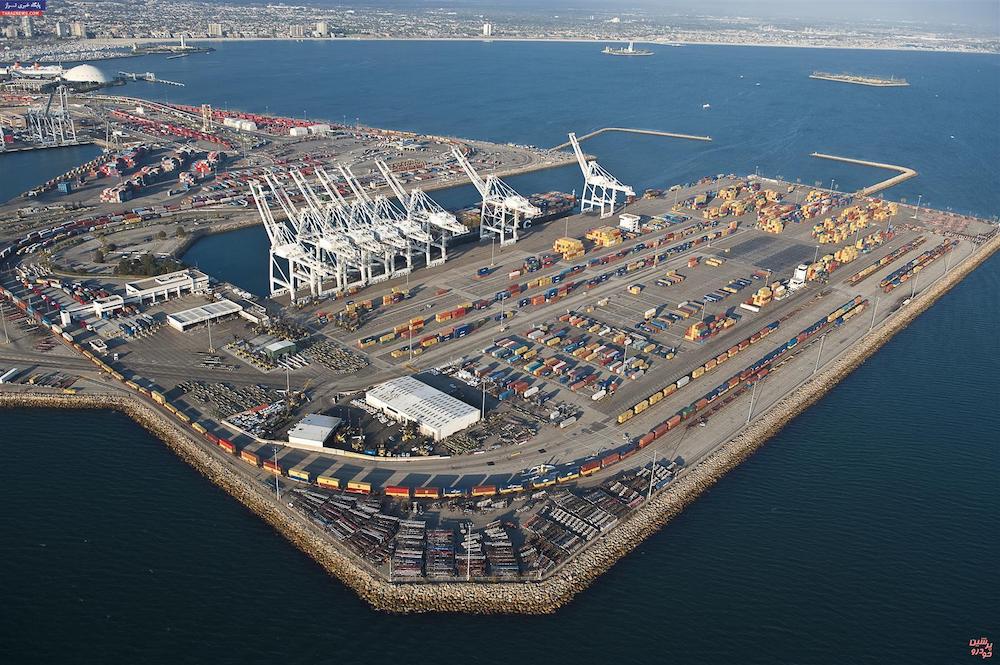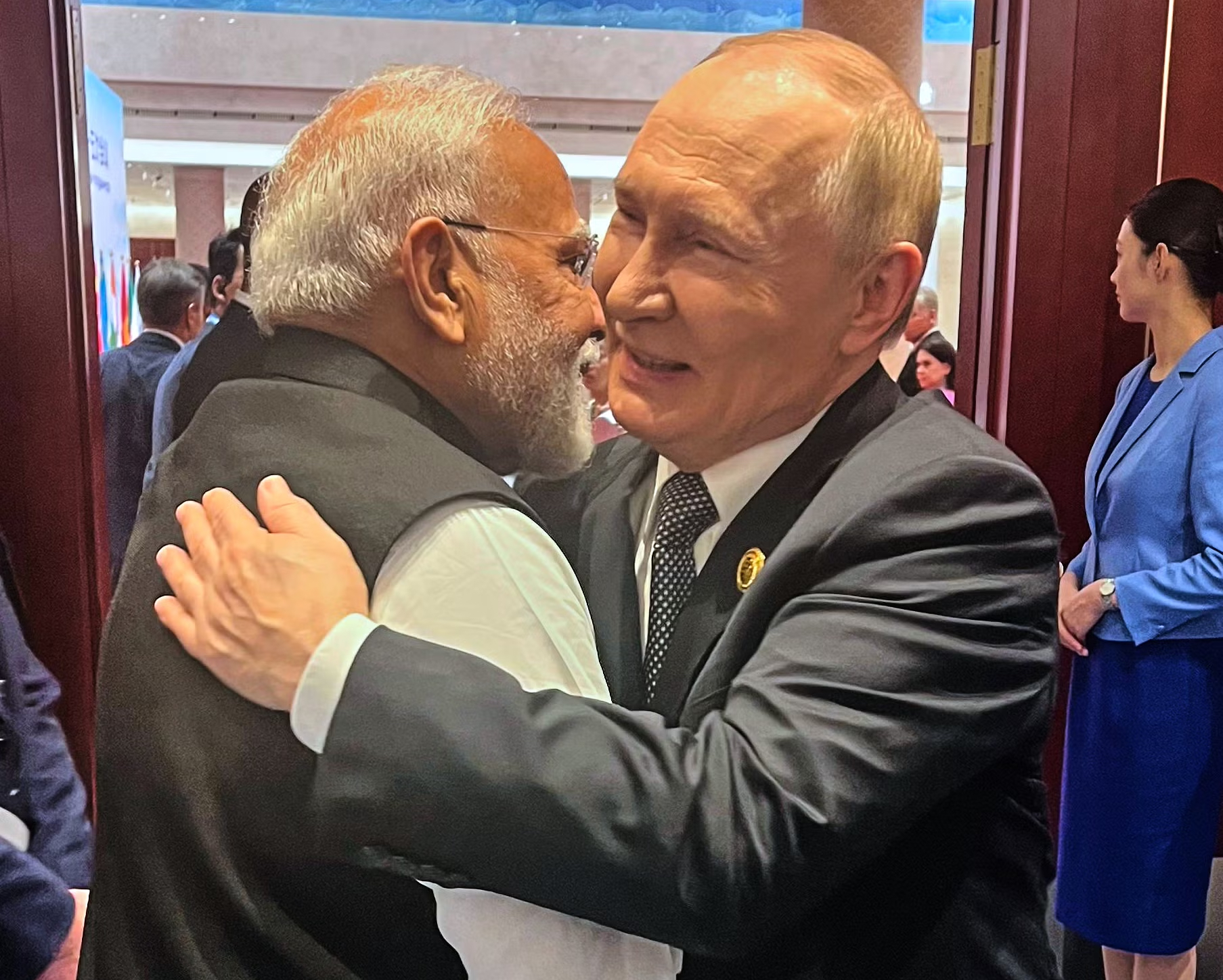 The breakdown in US-India trade talks reveals fundamental philosophical differences about economic sovereignty.
The breakdown in US-India trade talks reveals fundamental philosophical differences about economic sovereignty.
New Delhi: The punitive 50% tariffs imposed by the United States president, Donald Trump, on Indian goods appears to have backfired as it has accelerated India’s pivot toward China and Russia, although it will eventually inflict a significant economic damage on both New Delhi and Washington, DC. What began as an attempt to pressure India into abandoning its energy ties with Moscow has instead fractured one of America’s most important strategic partnerships and strengthened the very relationships Washington sought to weaken.
The tariff escalation, which took effect on August 27, represents the culmination of failed bilateral negotiations and marks the most dramatic deterioration in US-India relations since the Cold War. Not even India’s nuclear tests in May 1998 damaged the bilateral ties so much, despite Washington imposing sanctions on New Delhi following the tests.
The new tariff measure doubles existing 25% baseline tariffs imposed in early August, creating total duties comparable only to those on Brazil and China.
Strategic miscalculation
The Trump administration’s coercive strategy has produced outcomes directly contrary to its stated objectives. Rather than isolating Russia and weakening China’s influence, the tariff war has accelerated India’s rapprochement with both powers. It may be noted that a March 2025 letter to the president, Droupadi Murmu, by her Chinese counterpart, Xi Jinping, expressing concerns about US policies affecting China, marked the beginning of a dramatic thaw in Sino-Indian relations.
The two Asian giants have since restored direct flights, resumed tourist visas, restarted border trade, and taken concrete steps to ease military tensions along their disputed frontier. This reconciliation represents a significant strategic setback for American interests in the Indo-Pacific, where successive US administrations had cultivated India as a counterbalance to China’s rise.
Simultaneously, India has strengthened its ties with Russia. The telephonic conversation between the prime minister, Narendra Modi, and the Russian president, Vladimir Putin, on August 8, 2025 – one day after additional tariffs were announced – resulted in renewed commitments to deepen their “Special and Privileged Strategic Partnership”. Putin’s planned visit to India later this year for the annual bilateral summit underscores the relationship’s resilience despite western pressure.
Russian oil
The immediate catalyst for the crisis was India’s dramatic increase in Russian oil imports following Moscow’s invasion of Ukraine. Indian purchases surged from less than 1% before the war to 42% of total imports by 2025, driven by significant discounts that saved India an estimated $2.7 billion in 2023 alone.
For India, this represented energy pragmatism rather than ideological alignment. The external affairs minister, S Jaishankar, argued that India’s oil purchases served both national and global interests by stabilizing energy markets. However, the Trump administration viewed this relationship as financially supporting Russia’s war effort, with the US treasury secretary, Scott Bessent, noting that “some of the wealthiest families in India” had greatly benefited from these imports.
The American position fails to acknowledge the deep historical roots of India-Russia relations, which date back to the Cold War when Moscow emerged as New Delhi’s primary defence supplier after western nations often aligned with Pakistan. Russia still accounts for over 60% of India’s in-service military platforms, making an immediate pivot impossible without compromising national security.
Sovereignty concerns
The breakdown in US-India trade talks reveals fundamental philosophical differences about economic sovereignty. Despite five rounds of negotiations aimed at establishing a bilateral agreement, the sides remained deadlocked over American demands for greater market access in agriculture and dairy sectors.
India’s refusal to compromise reflects both domestic political considerations and broader concerns regarding food security. With hundreds of millions of small farmers dependent on agriculture, opening these sectors to large-scale American producers was viewed as politically and economically unsustainable. Jaishankar’s statement that India has “red lines” in trade negotiations underscored the government’s unwillingness to sacrifice domestic interests.
The philosophical divide extends beyond trade to strategic autonomy itself. India’s foreign-policy doctrine emphasizes maintaining independence while engaging with all major powers – a position that allows simultaneous participation in US-led initiatives, like the Quad, alongside membership in Russia and China-dominated organizations, like BRICS and the Shanghai Cooperation Organization.
Both nations hit
The 50% tariffs affect approximately 66% of India’s $86.5 billion in exports to the United States, totalling $60.2 billion worth of goods. The impact varies dramatically across sectors, with some facing near-total collapse while others remain relatively insulated.
The tariff shock disproportionately affects India’s MSMEs (medium, small, and micro enterprises), which account for 45% of total exports and dominate labour-intensive sectors. The textile sector alone faces potential job losses of 500,000, including direct and indirect employment.
India’s largest export category – pearls, precious stones, and metals worth $10.17 billion – faces tariffs rising from 2.1% to 52.1%. The gems and jewellery sector, concentrated in Surat, Mumbai, and Jaipur, employs millions and could see 150,000–200,000 jobs at risk. Cut and polished diamonds alone represent half of India’s jewellery exports to the US.
The textile sector confronts some of the steepest effective tariffs, with readymade garments seeing rates increase to 61% from 13.9%. Major textile clusters in Tirupur, Noida, Ludhiana, and Jaipur employ hundreds of thousands who could face job losses. The sector may lose ground to competitors in Bangladesh and Vietnam, which face significantly lower tariffs.
Electrical and electronic equipment worth $9.89 billion now faces approximately 28.6% tariffs, creating competitive disadvantages for Indian manufacturers. The pharmaceutical sector, which has made India the “pharmacy of the world”, confronts higher duties that could impact generic drug accessibility in the American market.
The Congress president, Mallikarjun Kharge, warned that at least 10 sectors could suffer losses of ₹2.17 lakh crore from the first phase of tariffs alone, with nearly 1% of GDP potentially impacted. Regional employment clusters face particularly severe disruption.
According to the Global Trade Research Initiative, India’s exports to the US could decline by $5.76 billion – a 6.41% drop – in 2025. More dramatic projections suggest exports could fall from $86.5 billion to $49.6 billion in fiscal 2026, representing a 43% decline.
Americans bear burden
The tariff policies are creating significant inflationary pressures in the US economy, contradicting Trump’s claims that foreign countries bear the cost. Consumer prices in July 2025 increased by 2.7% year-over-year, with core inflation rising to 3.1% from 2.9% in June.
Economic analysis reveals that American consumers ultimately bear the majority of tariff costs. Imported goods cost 5% more than pre-tariff trends predicted, while domestically produced goods run 3% higher. Goldman Sachs economists predict that around 70% of direct tariff costs will fall on consumers, potentially escalating to 100% when considering indirect effects.
The Producer Price Index rose 3.3% year-over-year in July 2025, with tariff-heavy imports experiencing sharp price increases. US wholesale prices jumped nearly 1% in July – the fastest increase in over three years – directly attributed to Trump’s tariff policies.
The US Federal Reserve faces a complex policy dilemma as tariff-induced inflation constrains monetary policy flexibility. Fed officials have noted that “tariff effects were becoming more apparent in the data”, preventing anticipated interest rate cuts that could support economic growth.
Economic projections suggest the tariff policies could reduce US GDP growth from 2.8% in 2024 to 1.9% in 2025 and 1.2% in 2026. The combination of rising inflation and decelerating growth raises concerns about stagflation.
Geopolitical realignment
The crisis has accelerated India’s integration into alternative multilateral frameworks designed to reduce dependence on western-dominated systems. The July 2025 BRICS summit in Brazil’s Rio de Janeiro demonstrated the bloc’s growing coherence around multipolarity and alternative economic arrangements.
Russian officials have explicitly supported India’s position, with Kremlin spokesman Dmitry Peskov criticizing efforts to “force countries to sever trading relations” with Russia as “illegitimate”. This solidarity strengthens India’s resolve to maintain strategic autonomy despite American pressure.
The development of alternative payment systems, trade arrangements, and institutional frameworks within BRICS reflects a broader desire to reduce dependence on western systems. While these alternatives remain nascent, sustained US pressure could accelerate their development and adoption.
Regional and domestic implications
The deterioration of US-India relations creates opportunities for China and Russia to expand influence in South Asia. Pakistan may benefit from improved US ties as America seeks alternatives to counter Chinese influence in the region. However, the question whose answer everyone knows is: will Islamabad jump out of Beijing’s lap and move towards Washington?
Other countries will observe how American tariff policies disrupted even close partnerships, leading to greater caution in future dealings with Washington. This could accelerate the formation of alternative blocs designed to reduce dependence on US-dominated systems.
Limited scope for resolution
Despite current tensions, several factors could facilitate eventual de-escalation. The strong foundation of people-to-people ties, including the large Indian-American diaspora, creates natural constituencies for improved relations. The complementary nature of the two economies provides opportunities for mutually beneficial cooperation.
Both countries face common challenges, including climate change, terrorism, maritime security, and China’s rise, which could serve as bases for renewed cooperation. However, the key will be finding face-saving mechanisms that allow both sides to claim success while addressing underlying issues.
Lessons in strategic overreach
The India tariff episode offers important lessons about the limitations of economic coercion as a foreign-policy tool. Large, diverse democracies with strong domestic constituencies and alternative options possess sufficient resilience to resist such pressure.
The interconnected nature of contemporary global challenges requires sustained multilateral cooperation that can be easily disrupted by sudden policy shifts. Climate change, pandemic response, and technological governance cannot be effectively addressed through bilateral arrangements or economic pressure alone.
For India, the crisis reinforces the importance of diversifying partnerships and building domestic resilience. The experience demonstrates both the benefits and limitations of strategic autonomy while highlighting the value of alternative partnerships and institutions.
The tariff war represents more than a bilateral trade dispute – it marks a potential turning point in the evolution of global order. The crisis demonstrates how economic nationalism and unilateral coercion can undermine carefully constructed partnerships and accelerate international system fragmentation.
From India’s perspective, the experience reinforces the wisdom of strategic autonomy and diversified partnerships. The country’s resilience in facing economic pressure, combined with growing relationships with alternative partners, positions it well for a multipolar world where no single power can dictate terms.
The damage to US-India relations will likely persist long after current disputes are resolved, which will invariably shrink American influence in one of the world’s most dynamic regions. The alternative – continued fragmentation and bloc formation – benefits no one and undermines the global cooperation needed to address humanity’s shared challenges.
Follow us on social media for quick updates, new photos, videos, and more.
X: https://twitter.com/indiasentinels
Facebook: https://facebook.com/indiasentinels
Instagram: https://instagram.com/indiasentinels
YouTube: https://youtube.com/indiasentinels
© India Sentinels 2025-26

